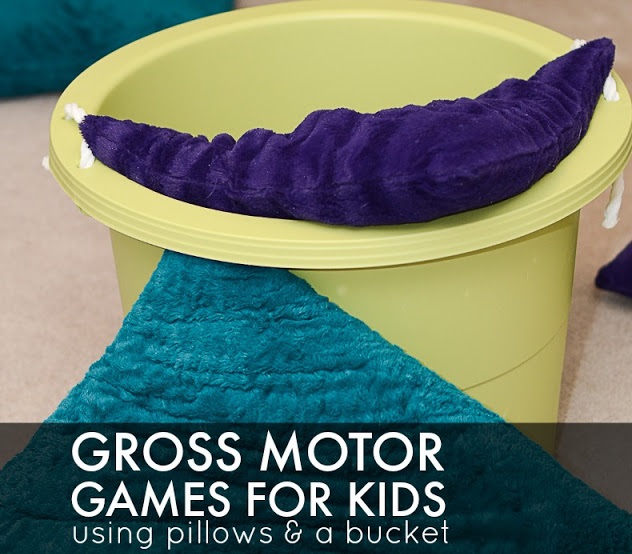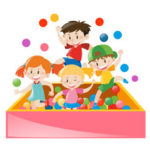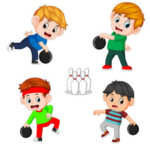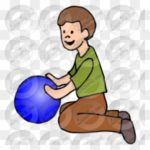
by Neetu | Jun 21, 2021 | Manthan
Learning Outcome
Students will perform a dance activity that will incorporate rhythmic movements, as well as challenge the brain to recognize sequences and patterns.
The rhythmic movements are aligned with the chorus and verses of the song. Students should recognize the patterns and sequences as they are performed with the music.
Activity Description
Chorus: During each chorus, which is 32 counts, the following movements will be done:
1-8 counts – Step back at an angle with R foot (1-2), bring feet together, and bounce 2x (3-4)
Step back at an angle with L foot (5-6), bring feet together, and bounce 2x (7-8)
Repeat these movements
1-8 counts – Step R touches L’s foot across in front of the body. Step L touches R’s foot across in front of the body. Arms go out to the side as the foot is pointed across the body. Each step touch is 2 counts. Reverse and repeat again on each side.
1-8 – Arms up overhead for 4 counts and down low for 4 counts
8 counts of music – March in place
Verse:
1-8 Slide R 2 claps, 4 jumps
1-8 Slide L 2 claps 4 quick heels
1-8 Slide to the back of the room 2 claps, 4 rocks side to side
1-8 Slide to the front of the room 2 claps and 2 criss-cross jumps
After each verse, the song immediately goes into the chorus, and movements for the chorus are repeated.
Music and marches are repeated followed by verse movements.
The movements are as follows:
12 counts – Hold at the beginning of the song
Chorus movements, marches
Verse movements, chorus movements, 8 marches
Verse movements, chorus movements, 8 marches
Verse movements, chorus movements, 24 marches until the end of the song
Required Material
4 Boundary cone, Music player.

by Neetu | Jun 21, 2021 | Manthan
Learning Outcome
Students will learn lots of different ways to have fun with hula hoops and challenge themselves by trying different hula hooping tricks.
Activity Description
Waist Hula Hoop
Start on your back, count to 3, and spin that hoop – try to keep it going as long as you can.
I’ve found that telling kids to move forward and back a pretty helpful cue
Extension: Try a waist hoop starting on your belly
Waist Hoop on Knees
Kneel on the ground and try to start your hula hoop while on your knees
Extension: Stand up from knees without dropping your hoop
Waist Hoop – Touch a Knee
Start hooping on your waist and then try to touch a knee or kneel down to the ground and stand back up without dropping your hoop
Neck Hula Hoop – AKA: “The Chicken Neck”
Start the hoop on the back of your neck and then bob your head like a chicken and try to keep it going
Be careful not to smack yourself in the face – start slow
Arm Hooping
Hold your arm out straight and spin your hoop around your wrist – keep your muscles tight and make small circles
Extension: Try to switch to another arm without stopping
Hula Jumping
Hold your hoop in front of you and jump through it like a jump rope
If your hoop keeps hitting the ground – pick up your hands and hold them a little higher
Extension: Try Hula Jumping Backwards
Knees Hula Hooping
Put your knees together and then start the hoop on the back of your legs and then start it spinning and see if you can keep it going on your knees
Extension: Waist to Knees – start on your waist and see if you can make it all the way down to your knees
Hula Hoop Skipping
Put the hoop on your foot with one foot inside the hoop and one foot outside the hoop. Try to spin the hoop around your ankle while hopping over it with your other foot.
Required Material
4 Boundary cone, Hula Hoop

by Neetu | Jun 21, 2021 | Manthan
Learning Outcome
Endurance, Flexibility, Strenght, Jumping, Running, Dodging.
Activity Description
Playing with a Rope
Arms – pretend to turn a rope double-dutch (both arms, alternating inwards).
Legs – pretend to jump a rope (fancy foot patterns).
With Chair – pretend to climb a rope (stand up, sit down).
On The Spot – pretend to do skipping tricks with invisible rope (jump and turn, speed,
crossovers, backward).
Playing With a Ball
Arms– pretend to bounce a ball (alternate arms).
Legs – pretend to kick a ball (alternate legs).
With Chair– pretend to roll a ball (two hands, bend over to touch the floor, swing arms up).
On The Spot – pretend to pick up and throw a ball (overhand).
Playing Tag
Arms – pretend to reach and tag (both hands, all directions).
Legs – running on the spot.
With Chai – freeze in shapes (using a chair for balance).
On The Spot – run, dart, and dodge.
Required Material
4 Boundary cone, Chair, rope

by Neetu | Jun 21, 2021 | Manthan
Activity Description
Pillow Throwing
Encourage your child to throw the pillows into the large bucket from a variety of distances. You could use tape on the floor to mark where your child can throw from. Or try timing them to see how many pillows they can get into the bucket in a certain time period.
Directional Pillow Jumping
Place one pillow in front, one pillow behind, one pillow to the left, and one pillow to the right of your child.
Pillow Kicking
Have your child lay flat on their back with their feet up in the air. Place a pillow on their feet and have them try to kick the pillow into the bucket. The bucket will have to be less than a foot away from their legs initially, but as they get better at the activity, try pulling the bucket further and further away to see if they can still get the pillow into the bucket
Required Materials
4 Boundary cone, a Variety of pillows, A large laundry basket, or a large plastic storage container would be a good substitute

by Neetu | Jun 21, 2021 | Manthan
Activity Description
Pillow Jumping
Scatter pillows across the floor and let the kids jump from pillow to pillow. Encourage them to try running from pillow to pillow, jumping with two feet, or jumping with one foot, etc. You could also call out specific colors of pillows for them to jump to.
Pillow”Balance Beam”
Place some pillows of different sizes and textures into a straight line. Have your child walk across the pillow “balance beam” barefoot to work on vestibular and tactile sensory input. (not pictured)
Pillow Throwing
Encourage your child to throw the pillows into the large bucket from a variety of distances. You could use tape on the floor to mark where your child can throw from. Or try timing them to see how many pillows they can get into the bucket in a certain time period.
Required Material
4 Boundary Cone, Variety of pillows, Bucket












